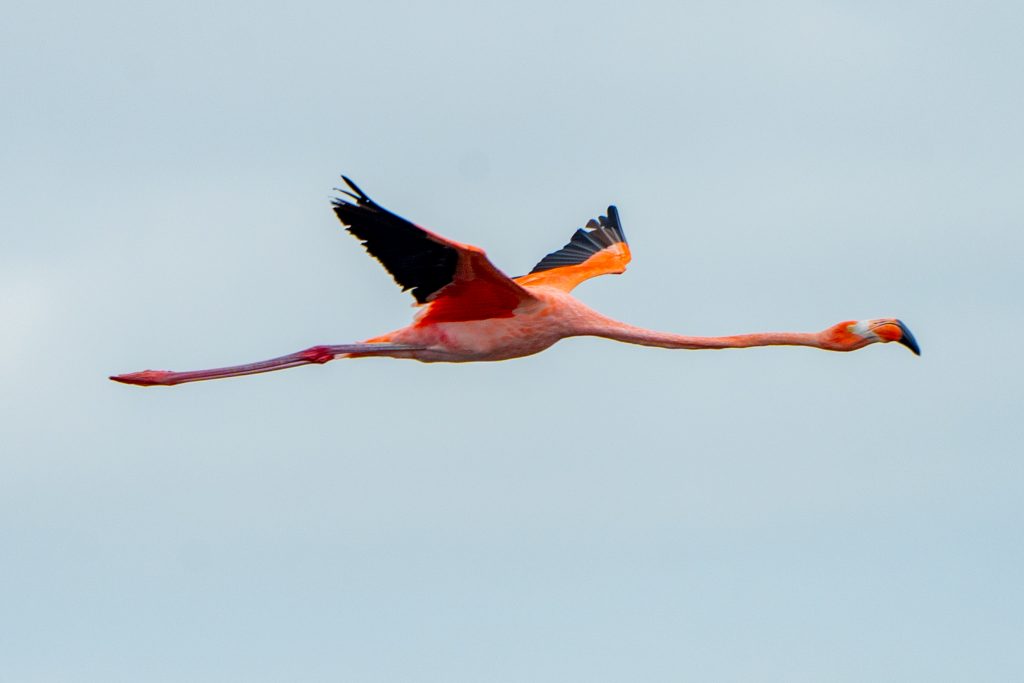Hurricanes are synonymous with the Florida experience. And for some reason, so are flamingos. They’re rare in most parts of our state, so a lone flamingo circling above a local lake this week had the birders squawking.
These tall wading birds prefer coastal areas where they sieve tiny invertebrates out of brackish or saltwater lagoons. Colonies of flamingos live in the Bahamas and throughout many islands in the Caribbean. They live along areas of the Yucatán and northernmost South America.
Wild flamingos don’t frequently set foot in Florida, but when they do, they tend to stick to the southern half of the state and keep their visits brief. There’s always the odd sighting here and there before these conspicuous birds move along to more familiar habitats.
Dozens of flamingos were recorded along the Gulf Coast of Florida in the wake of Hurricane Idalia. Which is to be expected. Tropical Storm Idalia swept through western Cuba on its way north, a region known for large breeding populations of these birds.
Several species of birds regularly get displaced by hurricanes. Usually it’s frigatebirds, like terns, that are discovered far from home. Large seabirds are already airborne and have the strength to ride an unruly storm to a place where they can safely land and recalibrate.
But it’s rare for flamingos to get blown this far from home. They definitely don’t like the swampy cypress lakes or sediment-heavy rivers in the inland parts of our state. Our recent visitor seemed as surprised as the local birders watching it circle Newnan’s Lake as if looking for any other option for respite.
After a short stop to straighten its feathers and catch a breath, it was gone again. Our ornithology collection manager Andy Kratter was excited to witness the astonishing visit and surmises that this lone bird is on its way home already. Many of the local birders that gathered at the lake for a post-hurricane watch party are still tickled pink by the once-in-a-lifetime sighting.
